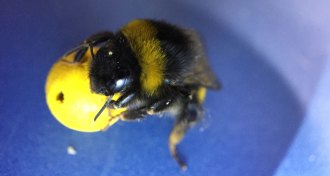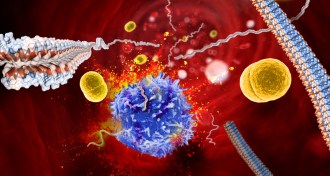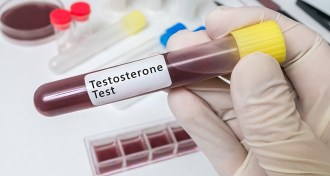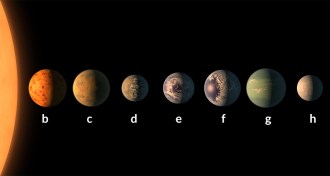All Stories
-
 Animals
AnimalsScore! Bumblebees see how to sink ball in goal, then do it better
A first lesson in six-legged soccer tests bumblebees’ ability to learn.
By Susan Milius -
 Life
LifeBacteria’s amyloids display surprising structure
Protein clusters made by Staphylococcus aureus bacteria have a surprising new structure.
-
 Genetics
GeneticsHuman genes often best Neandertal ones in brain, testes
Differing activity of human and Neandertal versions of genes may help explain health risks.
-
 Health & Medicine
Health & MedicineA preschooler’s bubbly personality may rub off on friends
Scientists caught personality shifts in preschoolers over a year by observing play.
-
 Science & Society
Science & SocietyPhysics greats of the 20th century mixed science and public service
New biographies highlight Enrico Fermi’s and Richard Garwin’s contributions to science and society.
-
 Health & Medicine
Health & MedicineQuestions remain about the benefits of taking testosterone
For men with low testosterone, the pros and cons of taking hormone replacement therapy are mixed.
By Meghan Rosen -
 Astronomy
AstronomySeven Earth-sized planets orbit nearby supercool star
A planetary system called TRAPPIST-1 has seven Earth-sized planets, three in the habitable zone, researchers report.
-
 Science & Society
Science & SocietyScience’s questions rarely have clear, easy answers
Acting Editor in Chief Elizabeth Quill discusses science's complexities.
-
 Quantum Physics
Quantum PhysicsReaders amazed by Amasia
Quantum spookiness, shifting landmasses and more in reader feedback.
-
 Health & Medicine
Health & MedicineInstead of starving a cancer, researchers go after its defenses
There may be ways to block tumors from adapting and outrunning the body’s defenses.
By Laura Beil -
 Animals
AnimalsToo many stinkbugs spoil the wine
Stinkbugs can ruin wine if enough are accidentally processed alive with the grapes. Three or fewer stinkbugs per grape cluster don’t have a noticeable effect on red wine.
-
 Life
LifeHowler monkeys may owe their color vision to leaf hue
Better color vision gives howler monkeys an edge at finding food.